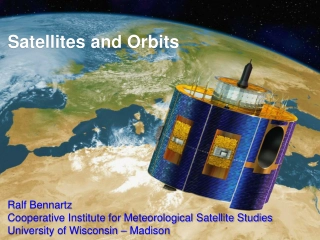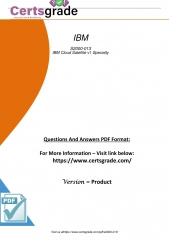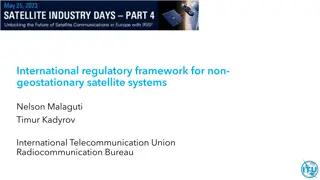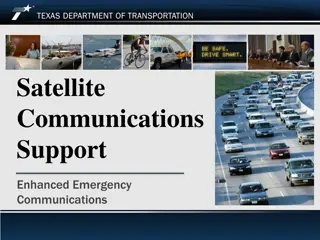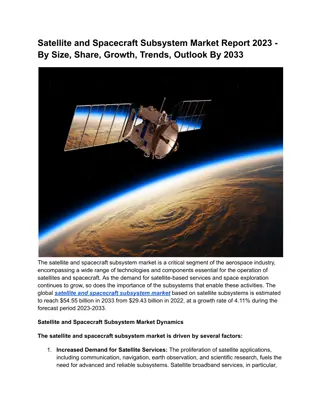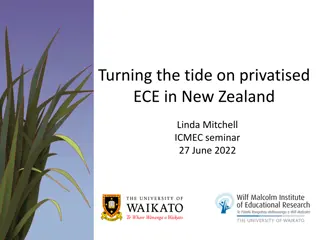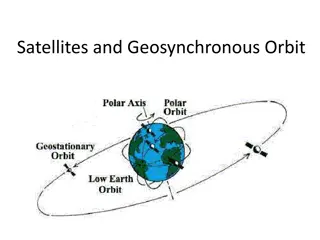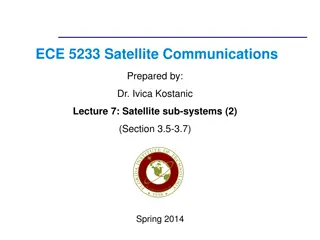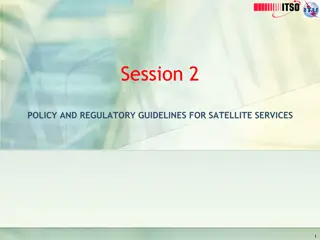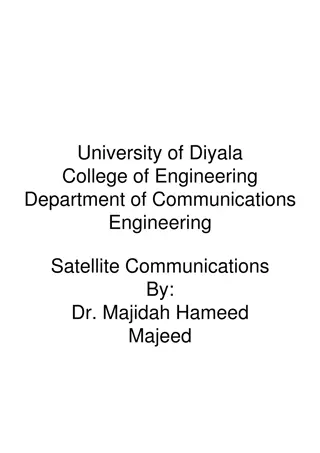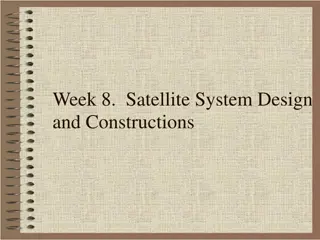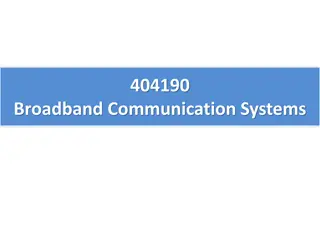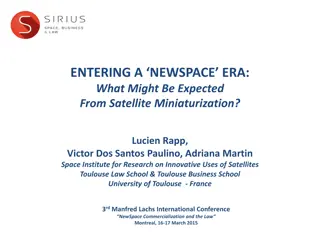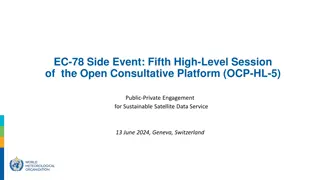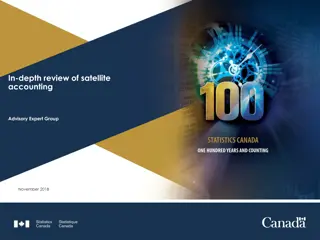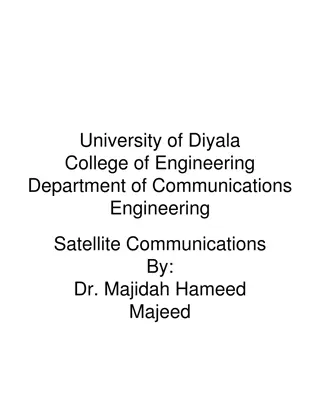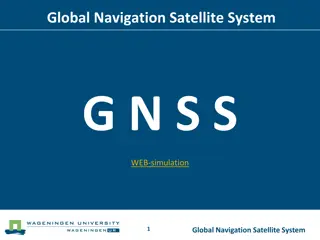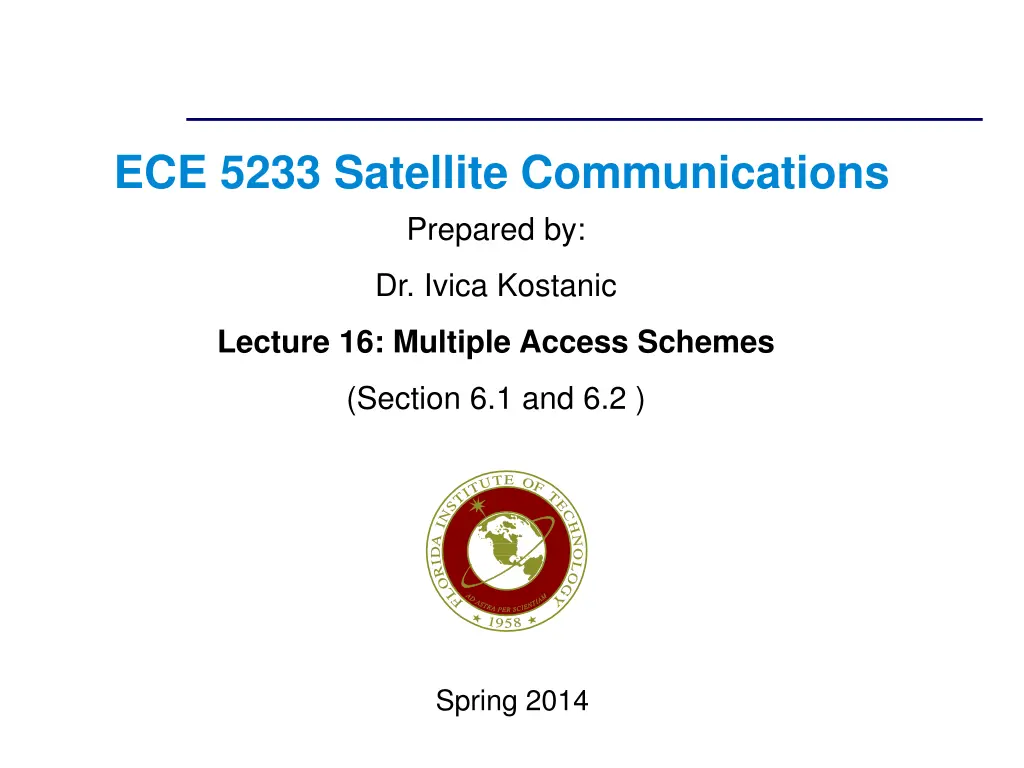
Satellite Communications: Multiple Access Schemes Overview
Explore the fundamental principles of multiple access schemes in satellite communications, including FDMA, TDMA, and CDMA. Learn about access to transponders, bandwidth assignment, multiplexing techniques, and more. Dive into examples and implementation details in this comprehensive guide.
Download Presentation

Please find below an Image/Link to download the presentation.
The content on the website is provided AS IS for your information and personal use only. It may not be sold, licensed, or shared on other websites without obtaining consent from the author. If you encounter any issues during the download, it is possible that the publisher has removed the file from their server.
You are allowed to download the files provided on this website for personal or commercial use, subject to the condition that they are used lawfully. All files are the property of their respective owners.
The content on the website is provided AS IS for your information and personal use only. It may not be sold, licensed, or shared on other websites without obtaining consent from the author.
E N D
Presentation Transcript
ECE 5233 Satellite Communications Prepared by: Dr. Ivica Kostanic Lecture 16: Multiple Access Schemes (Section 6.1 and 6.2 ) Spring 2014
Outline Access schemes in satellite networks FDMA implementation FDMA properties Examples Important note: Slides present summary of the results. Detailed derivations are given in notes. Page 2 Florida Institute of technologies
Satellite access Two types of access o Access to transponders (FDMA and polarization) o Multiuser access to bandwidth of a transponder Transponders o large bandwidth (36, 54 or 72MHz) o Shared between multiple users using FDMA, TDMA or CDMA access schemes Two types of bandwidth assignment o Pre-assigned (fixed) o Assignment on demand Page 3 Florida Institute of technologies
Multiplexing vs. Multiple Access Multiplexing (Mux) Multiple Access (MA) o Methodology for sharing same communication resource between multiple users o Implemented at the transponder o Common in all long distance communication o Aggregation of signals from multiple users o Performed on the ground (earth station) o Multiplexed signals are modulated on a single RF carrier o Most common: Time Division Multiplexing (TDM) o Inverse process: de-multiplexing Satellite systems use combinations of Mux/MA o TDM-FDMA o TDM-SCPC-FDMA, etc. Data rates for TDM Mux Standards Page 4 Florida Institute of technologies
Example: T1-hierarchy Multiplexing on T-1 may be o Channelized (respects the Mux structure) o Non channelized (uses proprietary Mux schemes within T-1 multiplex) Page 5 Florida Institute of technologies
Fundamental principles of access schemes Three principle transponder access schemes o Frequency Division Multiple Access (FDMA) o Time Division Multiple Access (TDMA) o Code Division Multiple Access (CDMA) CDMA principle (separation in code domain) Note: it is possible to have combination between different access schemes TDMA principle FDMA principle (separation in time domain) (separation in frequency domain) Page 6 Florida Institute of technologies
FDMA - implementation Historically the first deployed scheme Still dominant way of MA Signals from earth stations may be either analog or digital Access to transponder bandwidth may be either channelized or non channelized Transmission from earth stations does not have to be synchronized Note 1: Earth stations may have portions of spectra that are different in size Frequency guard bands are necessary to prevent signal interference Note 2: The received power from different stations may be different Note 3. The received powers may change over time due to rain attenuation Page 7 Florida Institute of technologies
FDMA two approaches One carrier per link o Each ES demodulates only relevant traffic Single connection per carrier (SCPC) o Each ES demodulates all traffic and keeps the relevant one SCPC is more efficient (less guard bands, less traffic segmentation, ) more common in today s deployments One carrier per link example Single connection per carrier Page 8 Florida Institute of technologies
FDMA SCPC example A tree station FDMA access Block diagram of Earth station A Signals received at the satellite Note 1: Only portion of demodulated channels are directed to A. Channels for C and B are still demodulated by the receiver, but are discarded. Assembling the signals at the base band Page 9 Florida Institute of technologies
FDMA Adjacent channel interference Adjacent channel interference limits on how tight are the signals sharing a transponder To combat ACI use guard bands Function modulation scheme and pulse shape Critical in cases when the signal experiences rain fade Power spectral density of digitally modulated signal 1 T ( ) f ( ) ( ) G f 2 = S S f x a ( ) f Fourier transform of pulse shape G Fourier transform of symbol autocorrelation function ( ) f Sa Page 10 Florida Institute of technologies
FDMA IM products Transponder amplifier is a non linear device Nonlinearity causes intermediation products Intermediation products of wideband signals are wideband modeled as increase in noise floor For a transponder bandwidth much smaller than operating frequency o IM products of order 3 and 5 are important Typical amplifier transfer function becomes nonlinear at high gains + 3 V AV bV out in in Typically A>>b. Note: Third order term grows 60dB/dec Page 11 Florida Institute of technologies
IM example Consider a case of 36MHz bandwidth transponder operating between 3705-3741MHz. The transponder caries two un- modulated carriers at 3718 and 3728MHz. Assuming that the PA characteristic may be modeled using cubic terms, determine the frequencies of in-band IM products. A: f31 = 3708MHz f32 = 3718MHz Page 12 Florida Institute of technologies

